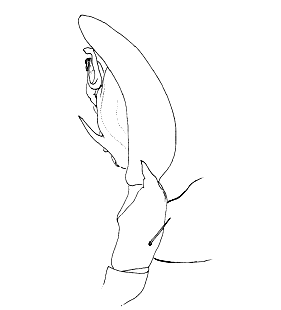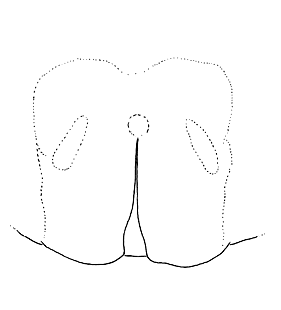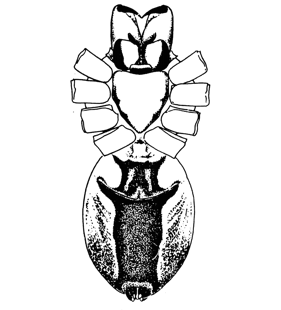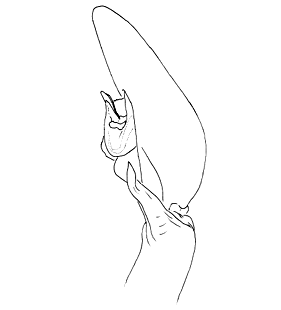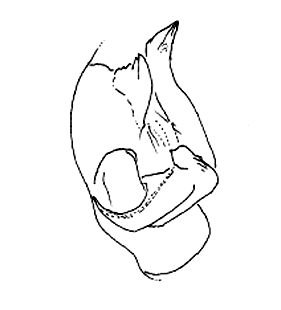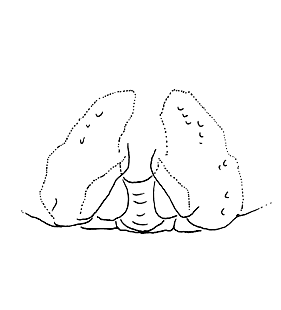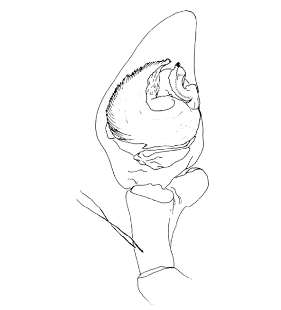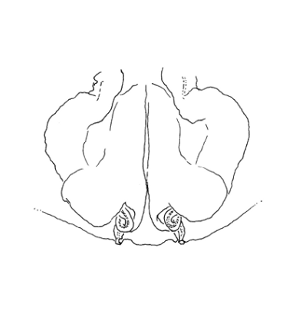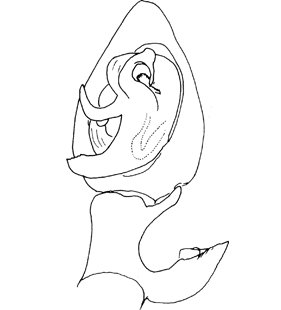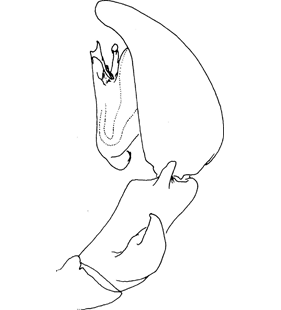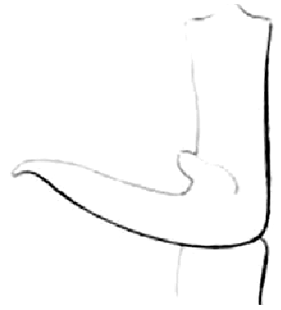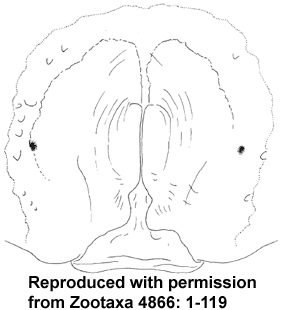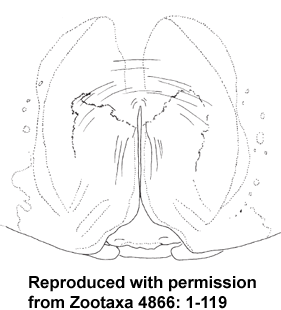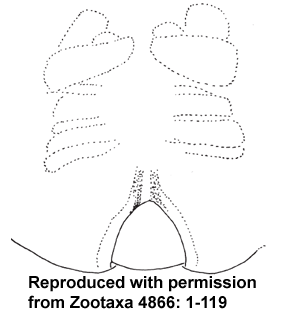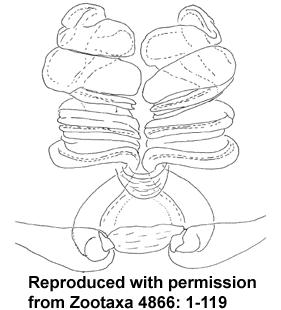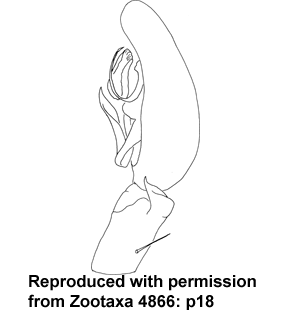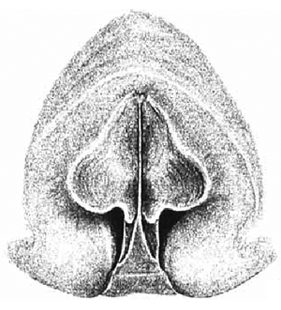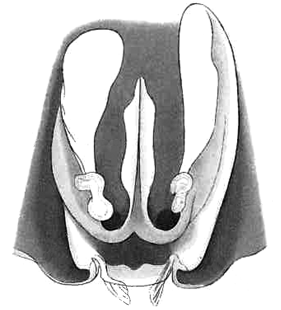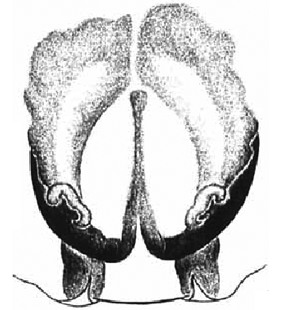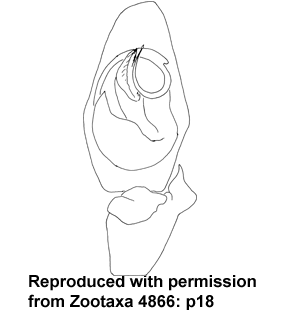Sparassidae: Olios Walckenaer, 1837
Schlüssel nicht vollständig. Weitere Arten sind am Ende aufgelistet. |
Für Fehlermeldungen oder Verbesserungsvorschläge bitte Link folgen: click
|
|||||||
| 1 |
Beim Männchen Embolus von 6-Uhr-Position ausgehend (linker Palpus in ventraler Ansicht); Tegulum mit lang ausgezogener Apophysis retrolateral; Konduktor lang, parallel zur distalen Embolusspitze; Cymbiumspitze kurz, ungefähr ein Drittel der Tegulumlänge oder weniger. Beim Weibchen Epigyne mit mittlerem Längsschlitz, nur in der hinteren Hälfte getrennt. Südliches Europa, Mediterraneis. Olios argelasius (Walckenaer, 1806) |
| ||||||
| - | Beim Männchen geht der Embolus in zentraler Position vom Tegulum aus (linker Palpus in ventraler Ansicht); Tegulum mit mehreren kleinen Apophysen in der prolateralen Hälfte; Konduktor klein, transvers zur Embolusspitze; Cymbiumspitze so lang wie das Tegulum. Beim Weibchen Epigyne mit lateralen Loben, ihre inneren Ränder sind deutlich getrennt in einen vorderen und hinteren Teil. Östliche Mediterraneis. Olios suavis (O. Pickard-Cambridge, 1876) |
| ||||||
| - | Beim Männchen Embolus von 1-Uhr-Position ausgehend (linker Palpus in ventraler Ansicht); das Tegulum mit breiter und vorstehender Apophysis reicht bis hinter den prolateralen Cymbialrand; Konduktor reduziert, retrotibiale Apophyse an der Basis breit, retrolateral gebogen, die Spitze nach retrolaterad gebogen. Beim Weibchen Epigyne mit mittlerem Schlitz, der hintere Teil getrennt, vorne mit zusätzlicher Vergrösserung, deren Enden nach vorne gebogen sind. Georgia, Zentralasien. Olios sericeus (Kroneberg, 1875) |
|
Weitere Taxa
1. Olios baulnyi (Simon, 1874) |
| |||||||
2. Olios fasciculatus Simon, 1880 | ||||||||
3. Olios hirtus (Karsch, 1879) |
| |||||||
4. Olios pictus (Simon, 1885) | ||||||||
5. Olios rubripes Taczanowski, 1872 |
|


